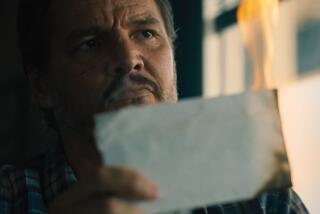The Price of Playing to the Mainstream : Pop Beat: Soundtracks featuring hip new bands make movies more interesting but often result in watered-down music.
- Share via
Ever since post-baby-boomers took to the 1992 romantic comedy-drama “Singles,” which featured songs and cameos by bands such as Pearl Jam and Alice in Chains, there’s been a flood of film soundtrack albums on the pop/rap market cashing in on the tastes of twentysomethings.
From “Judgment Night” to “The Crow” to “Reality Bites” to “Higher Learning,” movies are featuring some of today’s best and most relevant artists--from Ice Cube and Sonic Youth to Nine Inch Nails and Liz Phair.
“The type of soundtracks that are being made today are much different than in the past,” says Andrew Leary, vice president of A&R; and multimedia at Atlantic Records. “There’s many that are using alternative bands, which wasn’t frequently seen in the past. There are also soundtracks for many different forms of music, and I think that makes it a lot more interesting.”
These new or edgy artists add hip cachet and street credibility to films, whether contributing tracks from existing albums, making songs especially for a movie, or even collaborating with other acts (such as rappers Cypress Hill and dissonant rockers Sonic Youth teaming for “Judgment Night”). The most recent example is the “Boys on the Side” soundtrack, which--in keeping with the film’s spirit--features an all-female lineup of artists.
By using old songs, soundtracks can pull in varied audiences through nostalgia or kitsch--remember Kool & the Gang’s disco-era hit “Jungle Boogie” bubbling up in “Pulp Fiction”? Even Oliver Stone, Mr. ‘60s himself, brought in Nine Inch Nails’ Trent Reznor to help him integrate classics by Bob Dylan and Patti Smith into Gen-X bait on the “Natural Born Killers” soundtrack album.
“Using new artists automatically creates an audience,” says Leary. “Say a rapper like Coolio or a band like Green Day--there’s a certain audience that perceives these bands as really hip and if they’re associated with this film, they’re gonna go see it.”
At first, everyone benefited from the collaboration of film and pop. Record companies made big bucks, film companies could promote their product through MTV and radio, bands got exposure (“Reality Bites” made unknown singer-songwriter Lisa Loeb’s “Stay” a hit), and listeners had access to good compilations of worthy artists.
But now “hip” soundtracks are being produced en masse. Where the form used to be a fresh avenue for alternative and rap artists, it now seems to be suffering the bloat, exploitation and excess of Hollywood.
You can name at least 20 to arrive in the past year, and they keep on coming, from “Demon Knight” to “The Jerky Boys” to “Clerks” to “Dumb and Dumber.”
Now there are almost as many weak soundtracks out as bad films. “Higher Learning” is a good example of how obligatory doses of rap and alternative music are used to hip up a film and sell it to MTV-watchers, while the majority of the soundtrack’s content is substandard.
Hip soundtracks are nothing new, but it wasn’t until directors began taking cues from MTV, which proved that the combination of image and music sells, that the soundtracks got cool.
Says Leary, “It makes it more interesting. Directors see how music helps bring things to life as opposed to just a score. They see how it’s helped other films.”
Oliver Stone figured that one out and applied it to “Natural Born Killers.” While an older audience not familiar with the fleeting, quick-shot visuals of MTV deemed Stone’s filmmaking revolutionary, the film largely imitated the video program’s format.
It’s precisely all the marketing and demographics that water down the original intent of matching raw or street-level music up with like-minded film scenes. While Hollywood cashes in on alternative rock and rap, it’s diluting its very aim.
More to Read
The biggest entertainment stories
Get our big stories about Hollywood, film, television, music, arts, culture and more right in your inbox as soon as they publish.
You may occasionally receive promotional content from the Los Angeles Times.











